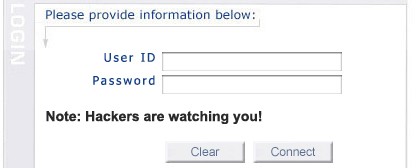5 Easy Steps to Keep Your Gmail, Hotmail, Yahoo and Other Online Accounts Away from Hackers
 Scared by all of the headlines of Gmail and Hotmail accounts getting hacked? Are you concerned that your Hotmail or Gmail account could be next in line to be attacked? Interestingly enough, this is a trend that we will unfortunately see happening until computer users take the necessary steps to proactively protect themselves. Here are 5 crucial safety steps that you can take to prevent your email accounts from being hacked.
Scared by all of the headlines of Gmail and Hotmail accounts getting hacked? Are you concerned that your Hotmail or Gmail account could be next in line to be attacked? Interestingly enough, this is a trend that we will unfortunately see happening until computer users take the necessary steps to proactively protect themselves. Here are 5 crucial safety steps that you can take to prevent your email accounts from being hacked.
Table of Contents
5 Steps to Protect Your Gmail, Hotmail, Yahoo and Other Accounts
Crucial Safety Step #1: Never give out or post your login credentials.
It may seem like common sense but you may be surprised to know that a number of computer users have simply posted their login information online accidentally given it to someone either by instant message or via email. You must never provide your password to anyone even if it seems someone from your ISP is asking for it. A reputable ISP or email servers provider will never ask for your login password. Hackers still used the old method of "sending an instant message asking for your password due to some type of issue with your account." Do not fall for this trick.
Crucial Safety Step #2: Clean and keep your system free of spyware and malware parasites that can log your password.
There are literally thousands of computer parasites circulating over the Internet. Many of them can compromise your system without you knowing about it. Usually these types of computer infections can be detected and cleaned off of your system with a reputable spyware detection and removal tool. It is essential that you use an antispyware or antivirus application to remove these threats. Hackers use these parasites to record keystrokes sometimes compromising login credentials for an online banking account or web-based email account.
Crucial Safety Step #3: Avoid using the same password for multiple online accounts.
Hackers know that a large majority of computer users will use the same password for many of their online accounts. Hackers thrive on this notion and it is simply a fact that some computer users feel it is just easier to utilize the same password for every account that they have. Using the same password for multiple accounts is risky. Hackers will attempt to access different online accounts using the same password which could lead to many issues and even worst, identity theft.
Crucial Safety Step #4: Change your password often.
Changing your password often is a way to keep hackers guessing. If at any point an account of yours is compromised, in some cases, you have time to fight back and block the hackers by simply changing your password. Using a new password will ensure that others are not able to log into your account. When you change your password, it is a good idea to use a strong password as mentioned in Step #5.
Crucial Safety Step #5: Use a strong password that no one can easily guess.
A strong password is not using your pets name or even your address. Use of a strong password will give hackers a hard time if they ever attempt to guess at it. Some automated or malicious applications used by hackers are able to guess a computer users password but use of a strong password may prevent that from happening. Strong passwords are made up of a combination of letters, capitalized letters, numbers and symbols (special characters). An example of a strong password would be "#3NigmA5oFtwar3" instead of "enigmasoftware".